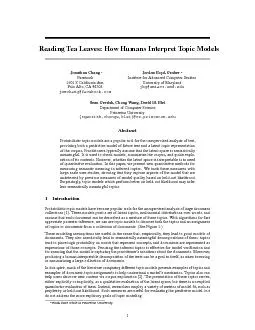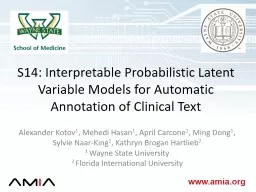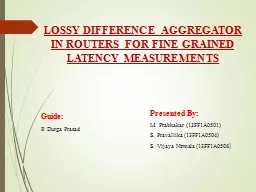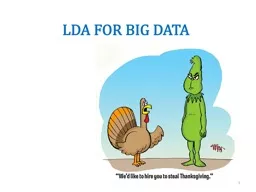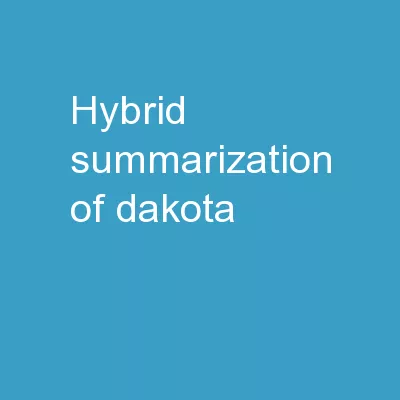PPT-Fast sampling for LDA
Author : lindy-dunigan | Published Date : 2018-01-07
William Cohen MORE LDA SPEEDUPS First RECAP LDA DEtails Called collapsed Gibbs sampling since youve marginalized away some variables Fr Parameter estimation
Presentation Embed Code
Download Presentation
Download Presentation The PPT/PDF document "Fast sampling for LDA" is the property of its rightful owner. Permission is granted to download and print the materials on this website for personal, non-commercial use only, and to display it on your personal computer provided you do not modify the materials and that you retain all copyright notices contained in the materials. By downloading content from our website, you accept the terms of this agreement.
Fast sampling for LDA: Transcript
Download Rules Of Document
"Fast sampling for LDA"The content belongs to its owner. You may download and print it for personal use, without modification, and keep all copyright notices. By downloading, you agree to these terms.
Related Documents





